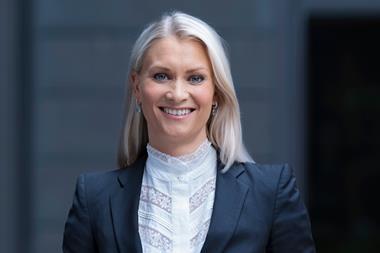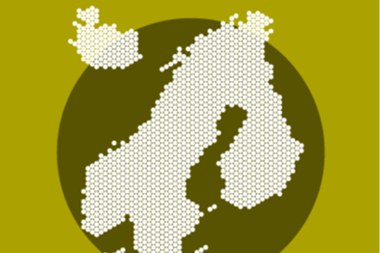Norway’s domestic sovereign fund produced a return of 7.1% in 2016, beating the market average by 1.2 percentage points with higher prices for major exports swelling profits.
Olaug Svarva, chief executive of Folketrygdfondet, which manages the Government Pension Fund Norway (GPFN), said: “Improved prospects for the world economy, a rise in oil prices and record high salmon prices gave solid results for the year.”
In 2015, the GPFN – the smaller domestic counterpart to Norway’s huge Government Pension Fund Global (GPFG) – made a return of 7%.
Folketrygdfondet reported that the fund’s equity portfolio generated a 10.5% return last year, with the fixed income portfolio making 2.2% in returns. Both portfolios outperformed their benchmarks, it said.
In its annual report, Folketrygdfondet said some corporate bond issuers in the oil services sector had undergone restructuring of their corporate financing in 2016, with high-yield bonds in certain cases being converted into equity. Bondholders had eased the conditions in terms by altering maturity dates in some cases, and also by taking writedowns.
Low oil prices over the last few years have put huge pressure on Norway’s oil services sector. However, by December last year, oil prices had risen to $56.8 (€53.8) a barrel from $27.9 in January.
“This contributed to an increase in the value of oil companies, but the low levels of activity continued to characterise parts of the oil suppliers sector,” Folketrygdfondet said.
The upswing for companies in the fish-farming industry continued in line with increased salmon prices, the manager added.
The GPFN’s total assets increased by NOK13.8bn (€1.5bn) over the course of 2016 to finish the year at NOK212.3bn.
Svarva said Folketrygdfondet could be pleased that the return had been relatively high for several years, but she said the world was changing and it could be hard to maintain high returns in the future.
“The pace of innovation is rapid, business models must be adjusted and international politics is changing,” she said.
While the GPFG invests outside Norway, the GPFN invests solely in Norway and the Nordic region, holding its assets in equities and bonds, split 60% to 40% respectively.
In Denmark, profits from emerging markets bonds and property helped drive the 2016 return at Danish labour-market pensions provider PenSam Liv to 7.9% in 2016, up from 2.5% the year before.
Releasing annual results, the company said total investment assets at PenSam Liv – the group’s main pensions business – grew to DKK102.8bn (€13.8bn) at the end of 2016 from DKK97.6bn at the end of the previous year.
PenSam’s total pensions-related assets amounted to DKK130.5bn, including its PenSam Pensionskassen business.
The company said last year’s investment return had been produced in a difficult market characterised by significant uncertainty, partly because of the UK’s vote to leave the EU, as well as the fallout from the unexpected US presidential election result.
“A positive return was made in all investment areas, but emerging markets distinguished itself with a high return on bonds of 14.5%,” PenSam said.
Investments in foreign shares had also contributed positively with a 10.4% return, it said, while alternative investments made an 8.5% return, partly because of a solid result for property investments of 12.8%.
Meanwhile, Swedish pensions and insurance firm Folksam has sold around €590m of shares in one of the country’s main banks, Swedbank.
However, it pledged to remain a long-term strategic shareholder in the bank.
The group sold 25.6 million ordinary shares in Swedbank – equating to 2.3% of the bank’s share capital – for SEK219 (€23) a share, via an accelerated bookbuilding process to institutional investors.
Following the placing, the Folksam group’s stake in Swedbank has shrunk to 7%, from 9.3% before.
Jens Henriksson, president and chief executive of Folksam, said: “Our ownership in Swedbank remains long-term both in financial and strategic aspects, even though this was the right time to decrease the Swedbank concentration in our asset portfolios.”
He said the group’s involvement with the bank had been “a pure success story” for Folksam’s customers, with the total return since 2008 amounting to around SEK22bn.
Back in 2009, Folksam signed a letter of intent with Sparbanksgruppen and Sparbanksstiftelsera about their ownership in Swedbank, with one aim being to keep a common ownership of around 20% in Swedbank.
That goal was still being met after the divestment, Folksam said.












No comments yet